The secret life of Botswana’s zebras
The sun sank low in the sky, and from our chairs around the fire we listened to the sounds of the desert. The eerie calls of jackals filled the air, and the night sky echoed with their yips and howls. One by one stars appeared in the sky overhead, and the jackals became quiet. The only sound was the crackling and spluttering of the fire, as the burning logs tumbled to ashes. As we moved from the fire to the dining tent, we could hear hyenas whooping in the distance. The solitude and stillness of Botswana’s Nxai Pan was all around us.
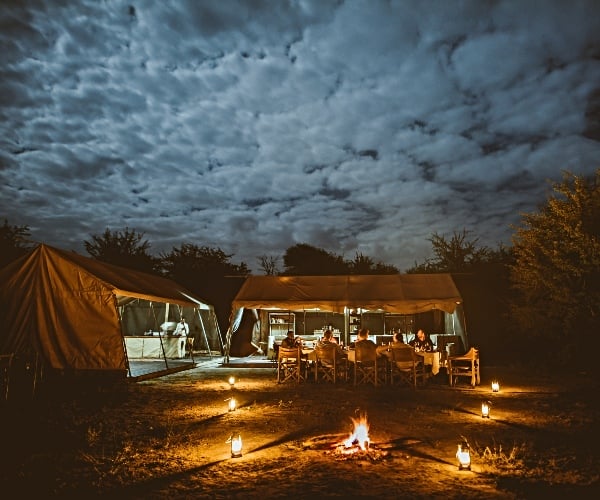
The Greater Makgadikgadi includes two National Parks, Makgadikgadi Pans National Park and the smaller, adjacent, Nxai Pan National Park. Located in the Kalahari Desert these are the world’s largest salt pans. Very dry for most of the year, this is a place in which it appears almost nothing can survive. Gaze across Nxai Pan in the dry season and all you’ll see is a salty mirage. Travel around it from June to November and, other than a few bat-eared foxes and the occasional elephant en route to somewhere else, the pan is pretty much devoid of life. Silence and solitude reign – a beautiful place.
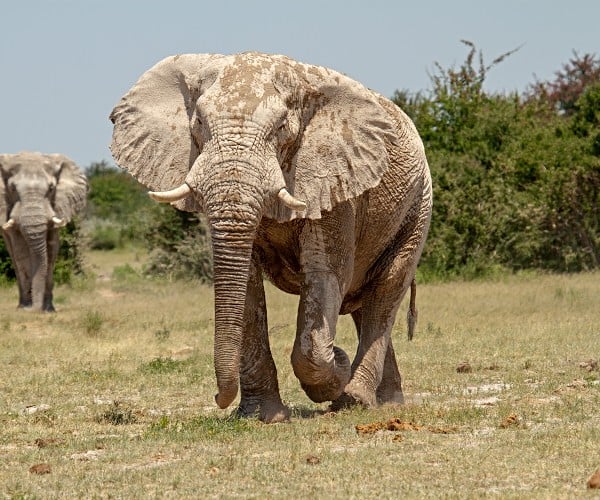
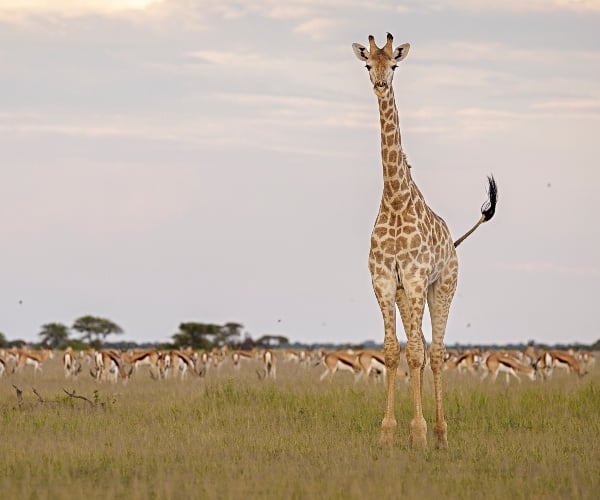
When the rains come, everything changes in Nxai Pan. Seasonal waterholes appear, sweet grasses sprout on the edge of the huge pan, and wildlife arrives. Giraffes and elephant make their appearance, springbok, wildebeest, impala and kudu all materialise from the desert mirage, migrating for the seasonal food and water. Most impressive of all the new arrivals are the zebra. So rich and nutritious is the fresh grass, that it attracts zebra and wildebeest from as far as 500 kilometres away. Over 30,000 zebras trek to Nxai Pan annually, in a blur of black and white stripes. Marching across territory predominantly inaccessible to people, the zebra travel in an almost direct line south from Chobe to Nxai Pan. You’d think 30,000 animals would be pretty easy to spot, but somehow the entire migration went largely unnoticed for years.
In the mid-2000s researchers started to notice that Botswana’s zebras were making extraordinary movements through inaccessible parts of the country. There’d been anecdotal evidence about the seasonal movements of zebra in Botswana, but researchers now began to realise that they were covering remarkable distances annually in what appeared to be some kind of migration. Finally, in 2012, researchers placed GPS collars on eight adult zebras and followed their journey over two years. This GPS tracking ultimately confirmed that Botswana’s zebras were completing a round-trip journey of around 500km each year, making it the longest mammal migration in Africa.
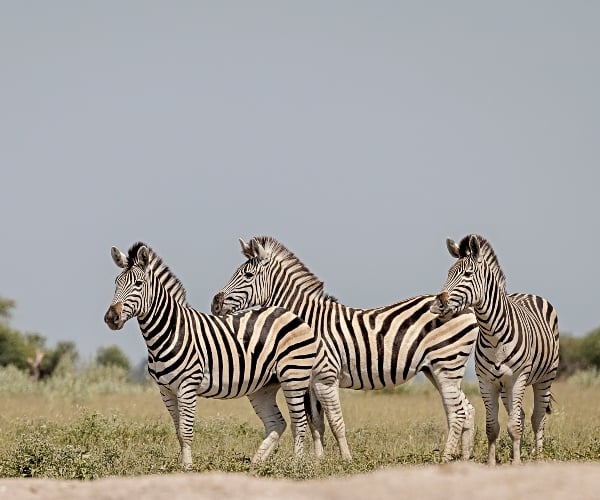
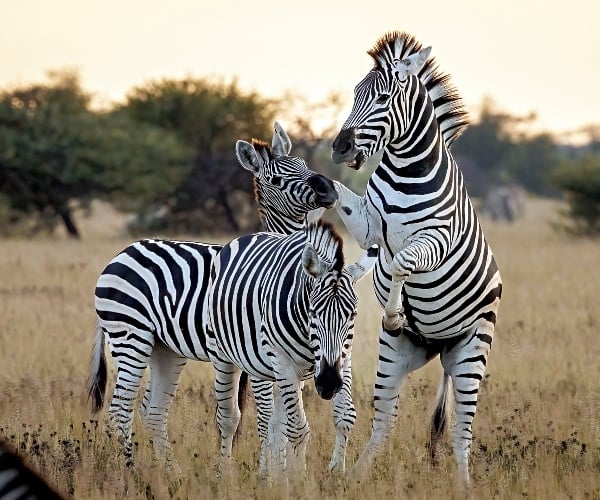
In the intervening years, scientists have established that there are two main zebra migration routes across Botswana. Zebras spend the dry season around the Okavango Delta and the Chobe River floodplain, and when the rains begin, usually around the end of November or early December, they move in two distinct groups – one from the south-eastern Okavango Delta to the Makgadikgadi Pans and back, and the other from the Chobe floodplains to Nxai Pan National Park, a journey of roughly 250km that typically takes 14-20 days, marching in an almost straight line, across territory predominantly inaccessible to people. Researchers believe the zebras migrate because the grasses at the pans have a higher mineral and protein content than the ones in the Okavango Delta or the Chobe floodplains, providing the zebra with two to three times more nutrition. So rich and nutritious is this grass, that up to 30,000 animals will make the move every year, in a blur of black and white stripes.
In the 1950s and 60s Botswana put up a series of extensive veterinary fences to combat outbreaks of foot-and-mouth disease in domestic cattle. These fences stretched for hundreds of kilometres, partitioning the country and blocking the route – from about 1968 no zebra could migrate. It wasn’t until around 2004 that these fences were removed, and here’s what’s really amazing – within three years of the fences being removed, some of the zebra had started to migrate again. Considering that the average life span for a zebra in the wild is around 12 years, no foal born in 1968 would still be alive in 2004. No living zebra could possibly remember the route, so how did they know where to go? Spurred on by heredity, the zebra instinctively followed the same ancient migration patterns as generations before them, seeming to know exactly where to go.
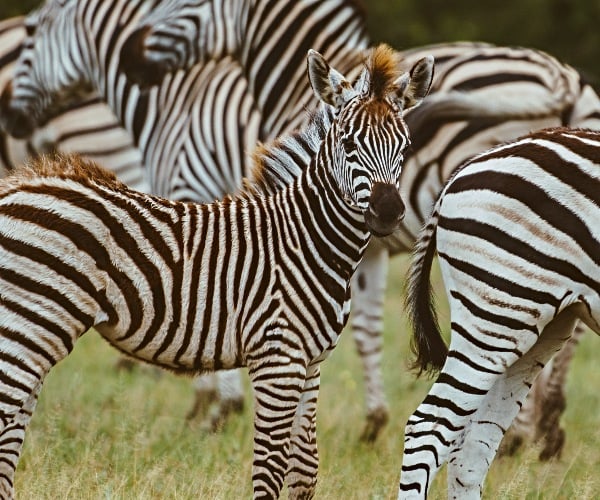
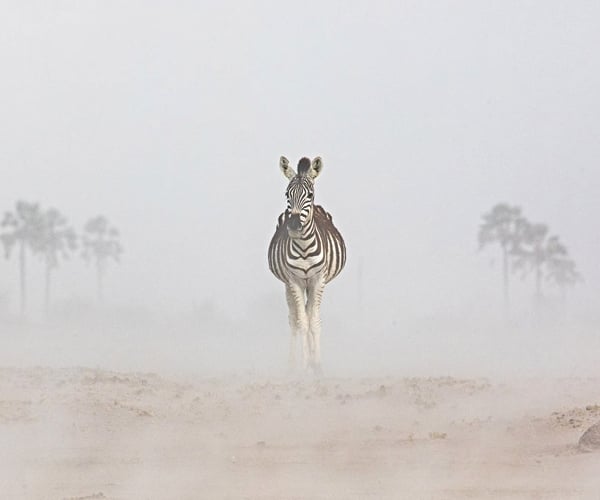
We had come to see the zebras who’d taken the Chobe – Nxai Pan migration route. These zebras spend the harshest of the dry months around the Caprivi Strip in north-eastern Namibia, and on the Chobe River flood plain, which forms the Namibia–Botswana border. In early December rains begin to fall in the Nxai Pan area, triggering their departure southwards. Most of the zebra travel in an almost direct linear path, arriving in Nxai Pan National Park two to three weeks later, while others take less direct routes, with some stopping at Seloko Plain before joining the rest, a few weeks later. The herds disperse throughout Nxai Pan National Park, remaining here for about three months, mostly staying on the pan itself, but some exploring the surrounding grasslands, before making their return. Surprisingly, the return route isn’t usually as direct or quick as their journey south. Most of the zebras take around 80 days to reach the more permanent water system of the Chobe and Kwando-Linyanti rivers and typically travel about 500-800km to get there.

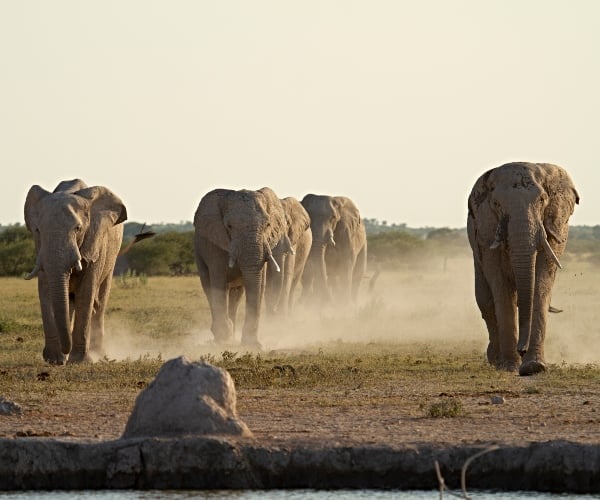
When the zebras reach Nxai Pan this is the perfect time and place for the females to give birth, and as we drove across the pan we could see it was dotted with countless long-legged, playful, zebra foals. Exploring the pan further, we discovered there was much more to see than just the zebras. Large groups of giraffes undulated gracefully towards acacia bushes, with males stopping occasionally to perform displays of necking, in that singular way male giraffes use to sort out their hierarchies. Herds of white-faced springbok, sometimes thousands strong, stretched out across the pan; young males playfully twisting and levering at each other with their horns, practising for later, when such skills would become important for establishing dominance and breeding rights. Shy bat-eared foxes, with their oversized ears, walked quietly, noses to the ground and ears cocked forward, listening for insects. A male and female ostrich protectively shepherded their flock of young, and several desert-adapted elephants ambled, remarkably quietly given their size, across the pan. The elephants here are sometimes called the ‘ghosts of Nxai Pan’ because of the way the white clay from the fossil pan sticks to their skin, giving them a whitish-grey hue. As we drove, we searched for, but never found, the famous black-manned Kalahari lions and cheetah, whose speed is so perfectly suited to the flat expensive landscape – the only trace of either was some tantalising tracks in the sand.
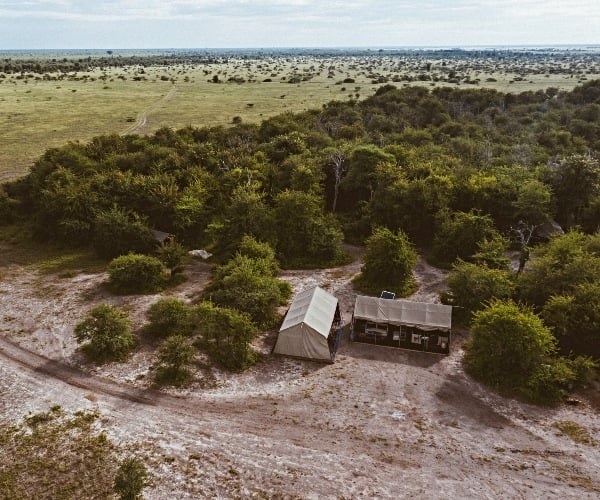
IMPORTANT NOTICE:
If you are reading this article anywhere other than on A Luxury Travel Blog, then the chances are that this content has been stolen without permission.
Please make a note of the web address above and contact A Luxury Travel Blog to advise them of this issue.
Thank you for your help in combatting content theft.
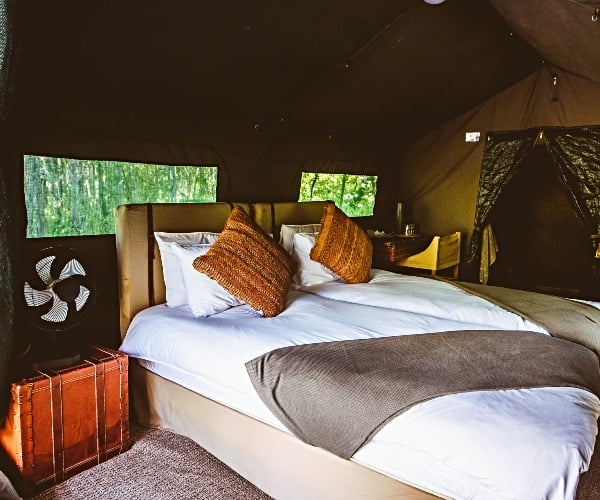
The zebra’s home in Nxai Pan is only seasonal, as is African Bush Camp’s Migration Expeditions camp, where we based ourselves at for our visit. A temporary camp it may be, only there for three months of the year, but there is nothing makeshift about it. An eco-sensitive camp with four Meru-style canvas tents, each with comfortable beds and ensuite bathrooms, with basins and bucket showers that were replenished with hot water on demand. A spacious dining and lounge tent, and a chef that conjured incredible meals, given the remoteness of the location, meant that we were never even close to ‘roughing it’ despite being in the remote wilds of Nxai Pan.
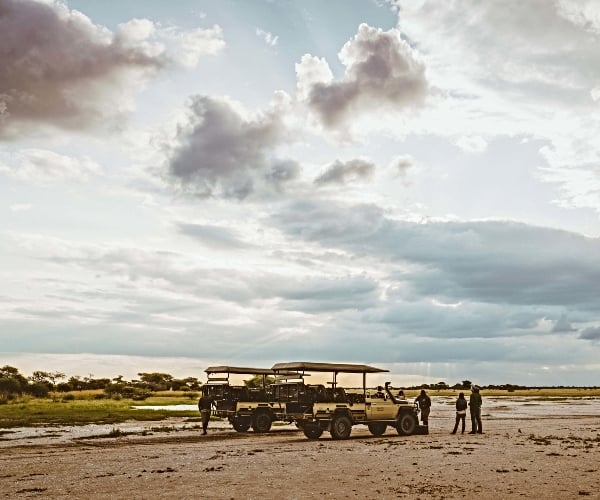
Botswana’s zebra migration is one of Africa’s best-kept secrets. The chance to see thousands of zebras moving across the raw Botswana landscapes is something few travellers ever get to experience, but one definitely worth doing.
Did you enjoy this article?
Receive similar content direct to your inbox.


A fascinating piece. So often Zebras are the forgotten animals of Africa. One of our tour guides continually referred to them as “horses in pyjamas” which didn’t do much to help people take them seriously!
Thanks Valerie, I’m really glad you enjoyed the piece. I agree with you about the ‘horses in pyjamas’ comment, I feel the same when guides call warthogs ‘pumbas’ I don’t like to be treated like a child out on safari and I always feel sorry for foreign guests who don’t get professional treatment from their guides!
Sarah
The fact that the warthog gets a name in The Lion King but that the zebras don’t is yet more proof that zebras never get the billing that they deserve.
This shouldn’t just be a post. It should be a dramatic 3D documentary telling the story of the zebra’s epic journey. Of course, with Attenborough commentary.
What a great opening paragraph! A lovely piece of writing that brings back so many safari memories for me, especially the sounds. I’d forgotten about the way that every now and again all the natural sounds die away to silence.
It is amazing how much satellites and GPS tracking have transformed our knowledge of wildlife and their movements. Back in the 80s a friend used satellite images to study how far wildfires triggered elephant migrations as the subject for her PhD.
Thanks Elaine, that’s super interesting, I’d be interested to read more about the idea of wildfires affecting elephant migration. It is indeed incredible how much technology, especially things like GPS have expanded our knowledge.
Sarah